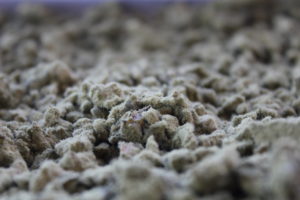Submitted by Aspergillus Administrator on 15 October 2012
 |
| Trichoderma longibranchiatum |
The debate on whether or not the toxins produced by moulds is a contributory factor to the illnesses claimed by many when living in a home with increased levels of moulds caused by dampness continue. Proponents of the theory in the US (where most of this information seems to come from) highlight many perfectly reasonable research studies showing the well characterised toxicity of mycotoxins, volatile chemicals, ozone and many others (see Sick Building Syndrome). Much time has been spent trying to prove that enough of any one of those irritants may come into contact with the occupants of a building to cause health problems.
Those who oppose (and those who consider the principle unproven as yet) point out that although there are many potential toxins in the indoor environment we are yet to be able to demonstrate convincingly how enough toxin could enter our bodies to cause health problems. Perhaps low doses of several toxins have health effects we do not yet understand?
A recent paper from a research group in Finland outlined a ‘new’ type of toxic peptide that might be prevalent in the damp indoor environment – trilongins. Up to 2.6% of the mycelial mass of the common fungus that produces them is made up of various types of trilongin, and different types of trilongin are shown to act synergistically to inhibit mitochondrial activity in mammalian cells. The suggestion is that this is a source of toxin that is plentiful and is a candidate for one cause of health problems in damp homes. We are still lacking quantitative estimate of the amount of trilongin produced in a ‘sick’ home and the suggested mode of ingestion so doubts remain about the effect on human health as it is difficult to estimate dose but the case for the presence of multiple sources of toxin which can interact to increase toxicity in a damp home is strengthened by this paper.
News archives
-
Title
Date

 ,
,  ,
, 

 ,
,  ,
, 

 ,
, 
